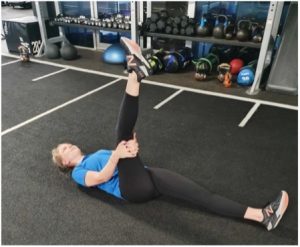National Stroke week – how can exercise help?
Stroke and exercise
It’s National Stroke Week!
Today, the Longevity Exercise Physiology teams at Drummoyne, Edgecliff, Marrickville, Bella Vista, Randwick, Pymble, Balmain, Neutral Bay, Coburg – Melbourne, and Barrie, Ontario – Canada discuss exercise after stroke and the associated benefits.
What is a stroke?
A transient ischemic attack (TIA), ischemic stroke, and intracerebral haemorrhage, or ‘stroke’ as they are commonly referred to, are cardiovascular events affecting the blood supply to the brain, that typically result in damage to the brain. Additionally, once you have had a stroke, the risk of a recurrent event increases.
Stroke is associated with significant disability following the event, including issues with cognition, memory, attention, pain, sensation, mental health, mobility, and balance. The actual nature and extent of impairment varies significantly between individuals. Exercise has been associated with not just physical improvements, but also psychosocial ones (Xiao, 2017). The main goals of exercise post-stroke is to restore physical function as much as possible, to make activities of daily living easier and to reduce the risk of a recurrent stroke.
“The main goals of exercise post-stroke is to restore physical function as much as possible, to make activities of daily living easier and to reduce the risk of a recurrent stroke.”
Aerobic training post-stroke
Aerobic training post-stroke has been associated with improvements in cardiorespiratory fitness (important for reducing the risk of another stroke), cognition, walking speed and endurance, balance, mobility and quality of life. Cardiorespiratory improvements are likely due to increased heart and lung muscle elasticity, improving function. This is especially important as lower levels of cardiorespiratory fitness are associate with an increased likelihood of stroke (Xiao, 2017).
There is also strong evidence to suggest an improvement in post-stroke cognitive function with aerobic exercise – this is likely due to improvements in oxygen consumption, cerebral blood flow and brain cell regeneration in areas related to cognitive function (Xiao, 2017).
Aerobic exercises include:
- Treadmill
- Cycling/Arm cycling
- Gait retraining

Strength training post-stroke
Resistance training is also an important, but under-appreciated component of post-stroke rehabilitation. Muscle atrophy from a sedentary lifestyle post-stroke can lead to the development of endocrine and metabolic disorders (Xiao, 2017), so it is important to use the muscles to curb this loss. Research has shown improvements in muscle strength following commencement of a resistance training program post-stroke. These improvements in muscle strength and function, also translate to improvements in gait and walking ability, including speed and endurance. Research has also found significant improvements in self-reported function and ability (Xiao, 2017).
“…improvements in muscle strength and function, also translate to improvements in gait and walking ability, including speed and endurance.”
Blood pressure and heart rate should also be monitored during resistance exercise, and exercises may need to be tailored according to motor deficits, such as contractures and restricted range of motion (Xiao, 2017).
Strength exercises include:
- Machines e.g. leg press
- Single leg exercises e.g. lunges
- Functional exercises: e.g. sit to stands

Flexibility training post-stroke
Around 65% of stroke survivors exhibit spasticity, causing muscle and joint stiffness, restricting function (Xiao, 2017). Research has a suggested flexibility training post-stroke may be beneficial to relieve spasticity, improve range of motion and motor function, reduce joint stiffness and prevent contracture (Xiao, 2017).
Flexibility exercises include:
- Passive, assisted stretching
- Strength training through range
- Daily home-based programs

How can we at Longevity Exercise Physiology help?
At Longevity Exercise Physiology, we’ll provide you with one-hour, one-on-one sessions to help you meet the exercise guidelines post-stroke, in a way that’s tailored to your likes and needs. As everyone is affected differently by stroke, we can work with you to develop the best possible program to help you achieve your goals.
If you are interested in using tailored exercise to help improve your life post-stroke, give Longevity Exercise Physiology Drummoyne, Edgecliff, Marrickville, Bella Vista, Randwick, Pymble, Balmain, Neutral Bay, Coburg – Melbourne, and Barrie, Ontario – Canada on 1300 964 002 to enquire today!

Written by Vaishnavi Pasupati
References
Xiao, J. (2017). Exercise for Cardiovascular Disease Prevention and Treatment. Springer Singapore.
